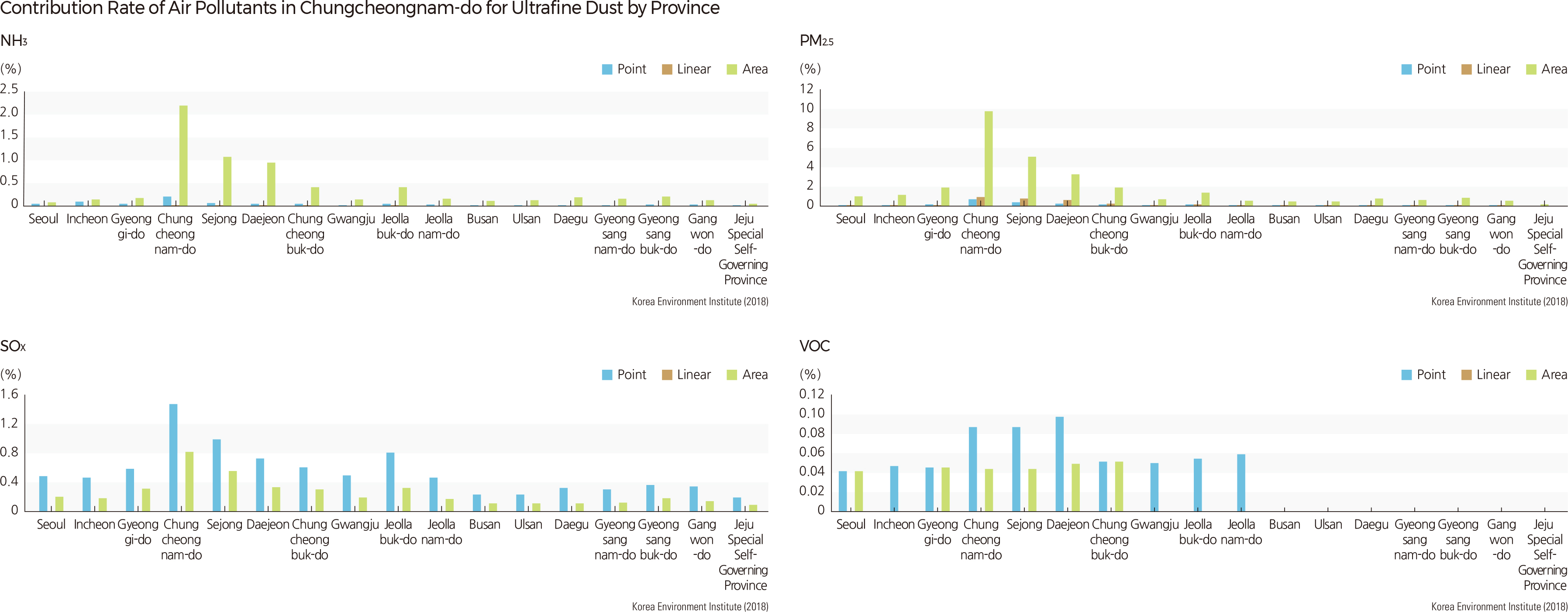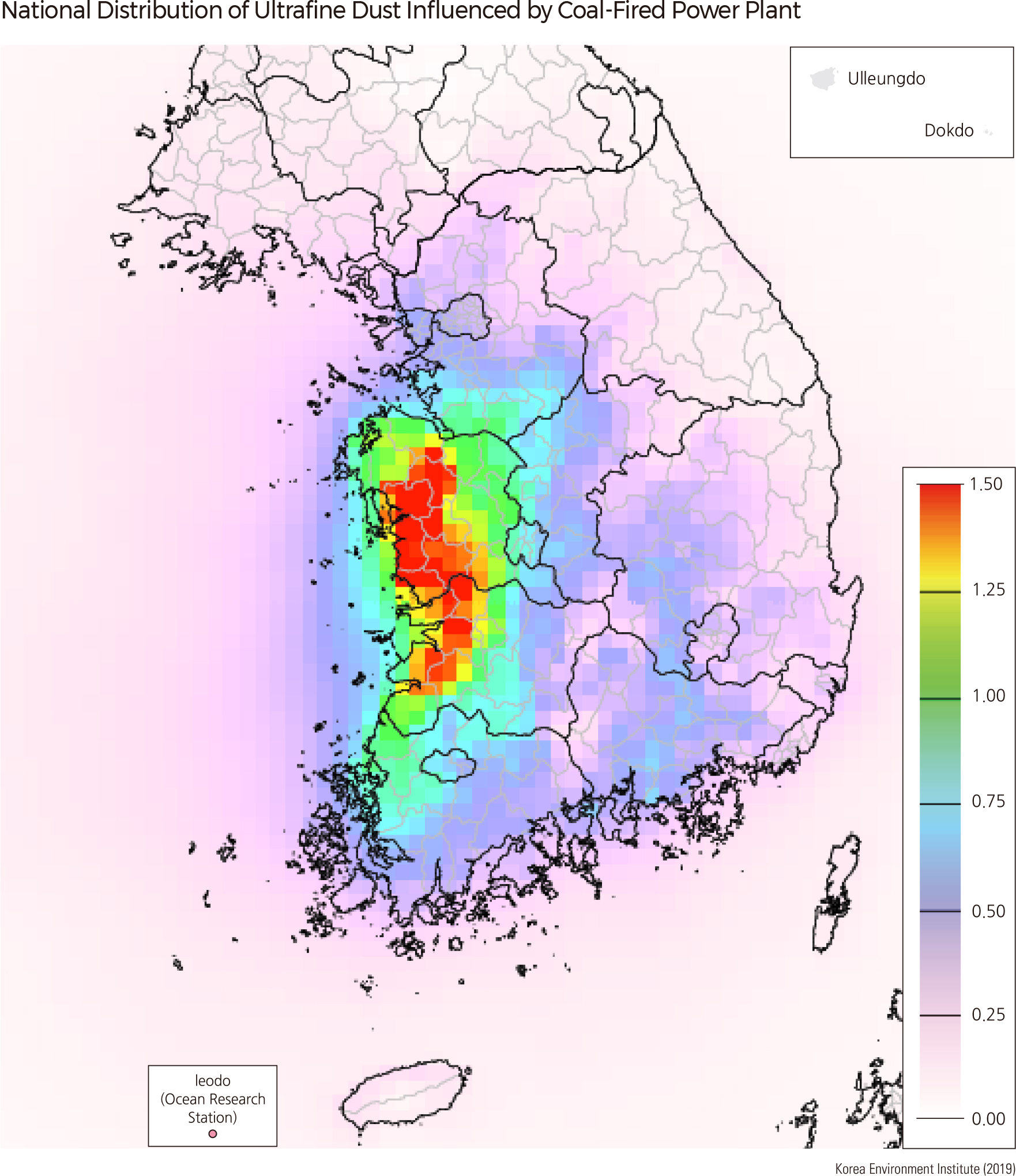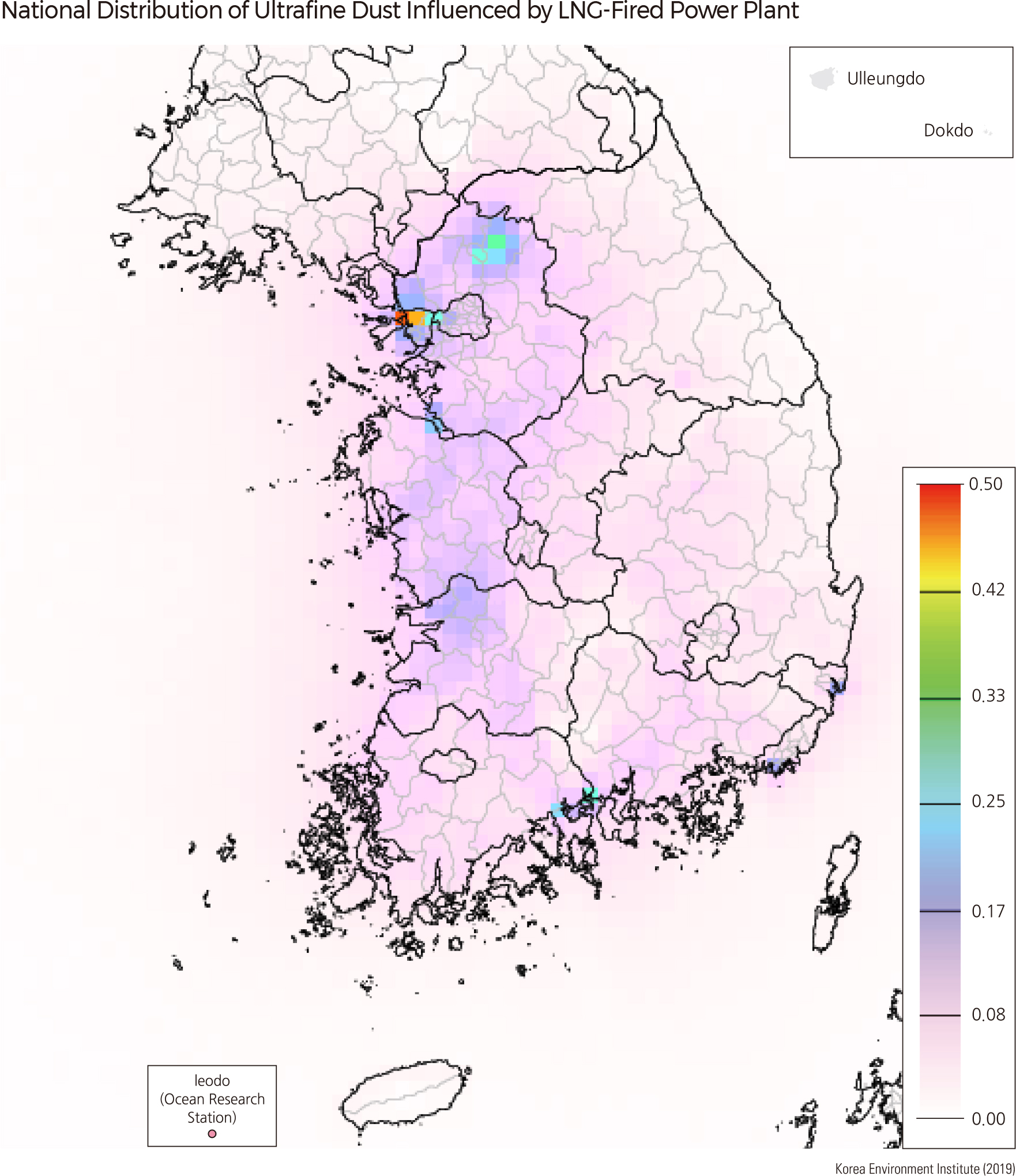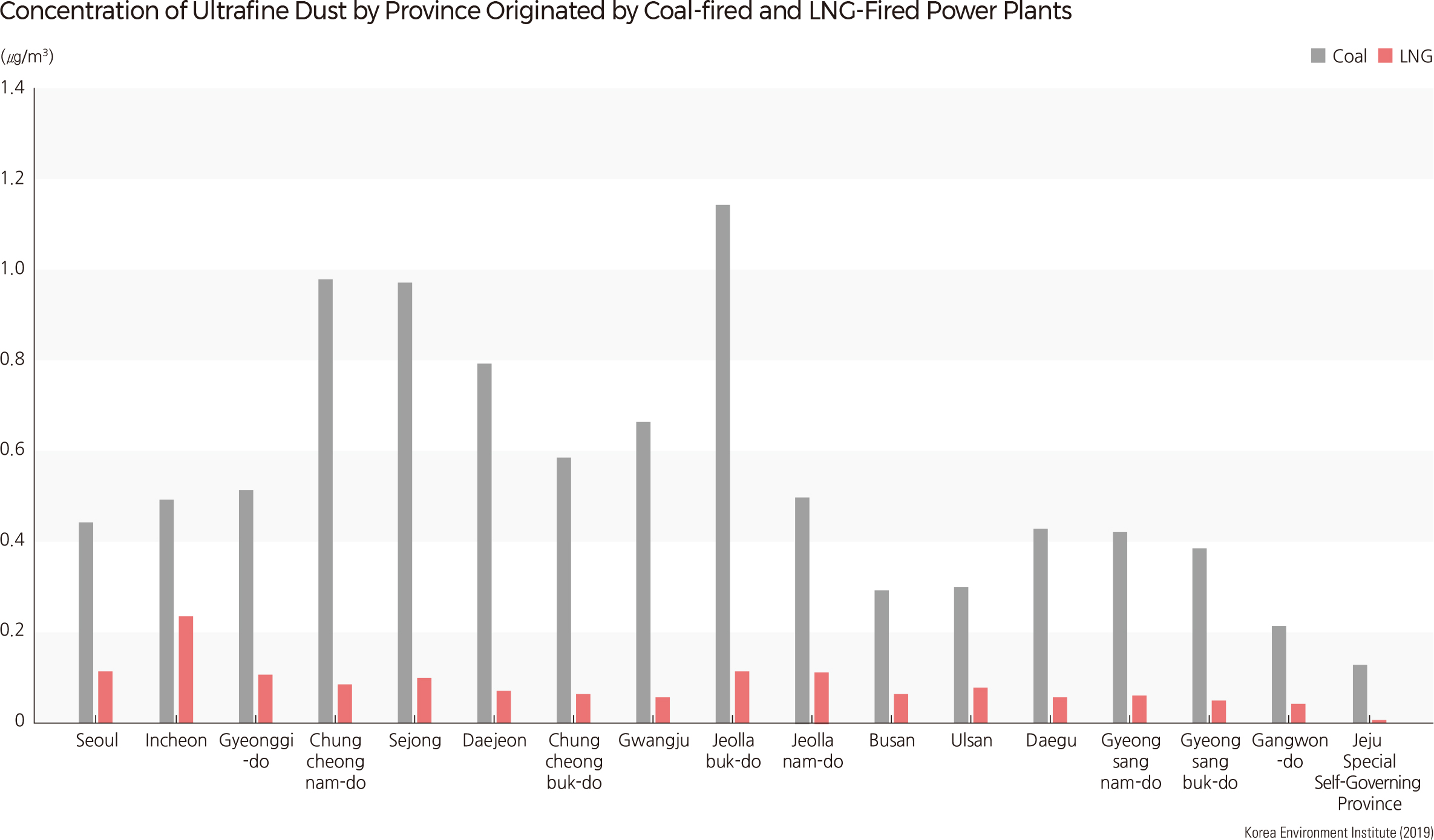English II 2020
Chungcheongnam-do is an area where large-scale petrochemical industrial parks are concentrated. Air pollution in this area is serious because the area is responsible for 50% of the total power generation of the nation's coal-fired power. Since 2015, Chungcheongnam-do has been named as the local government that has emitted the most air pollutants each year. Hyundai Steel, located in Dangjin-si of Chungcheongnam-do, is the business site with the highest emissions of pollutants in the country. Therefore, Chungcheongnam-do introduced the results of predictive modeling of air quality. These results estimated the effect of air pollutants in Chungcheongnam-do on the distribution of ultrafine dust in Korea. This predictive model used pollutant emissions data in 2015 obtained from the National Institute of Environmental Research (NIER).
The maps resulting from the modeling show how ultrafine dust (PM2.5) originating from NO2, SO2, VOC, NH3, and PM2.5 in Chungcheongnam-do spreads across the country. Air pollutants generated in Chungcheongnam-do have a profound effect on the whole of South Korea, particularly the western regions. For example, the concentration of ultrafine dust generated by NOx is not much different between Chungcheongnam-do, which is the original emission site of NOx, and Jeollabuk-do, adjacent to the south. In other words, there is no significant difference in the concentration of ultrafine dust between the two areas. This means that air pollutants can have a great impact on the atmosphere not only of the local government but also the neighboring municipalities.
The results of air quality modeling also provide meaningful information about the effect of domestic coal-fired power plants and LNG-fired power plants on the distribution of ultrafine dust. The concentration of ultrafine dust at coal-fired and LNG-fired power plants is 0.51 μg/㎥ and 0.10 μg/㎥, respectively. The concentration at the coal power plant was five times higher than the values measured at the LNG-fired power plant.
Looking at the concentration, by province, of ultrafine dust generated by the coal-fired power plants, Jeollabuk-do is 1.14 μg/㎥, which is the largest concentration among all local governments. Chungcheongnam-do is 0.98 μg/㎥ and Sejong is 0.97 μg/㎥. In the case of the LNG-fired power plant, Incheon is 0.24 μg/㎥, Seoul is 12 μg/㎥, and Jeollanam-do is 12 μg/㎥. The regions affected by coal-fired power plants are mainly Chungcheongnamdo and Jeollabuk-do. The regions affected by LNG-fired power plants are mainly the metropolitan areas, but it varies by region. The annual average of ultrafine dust may be slightly different. It depends on which year’s data are used. This is because emissions and weather conditions are different from year to year.
|





